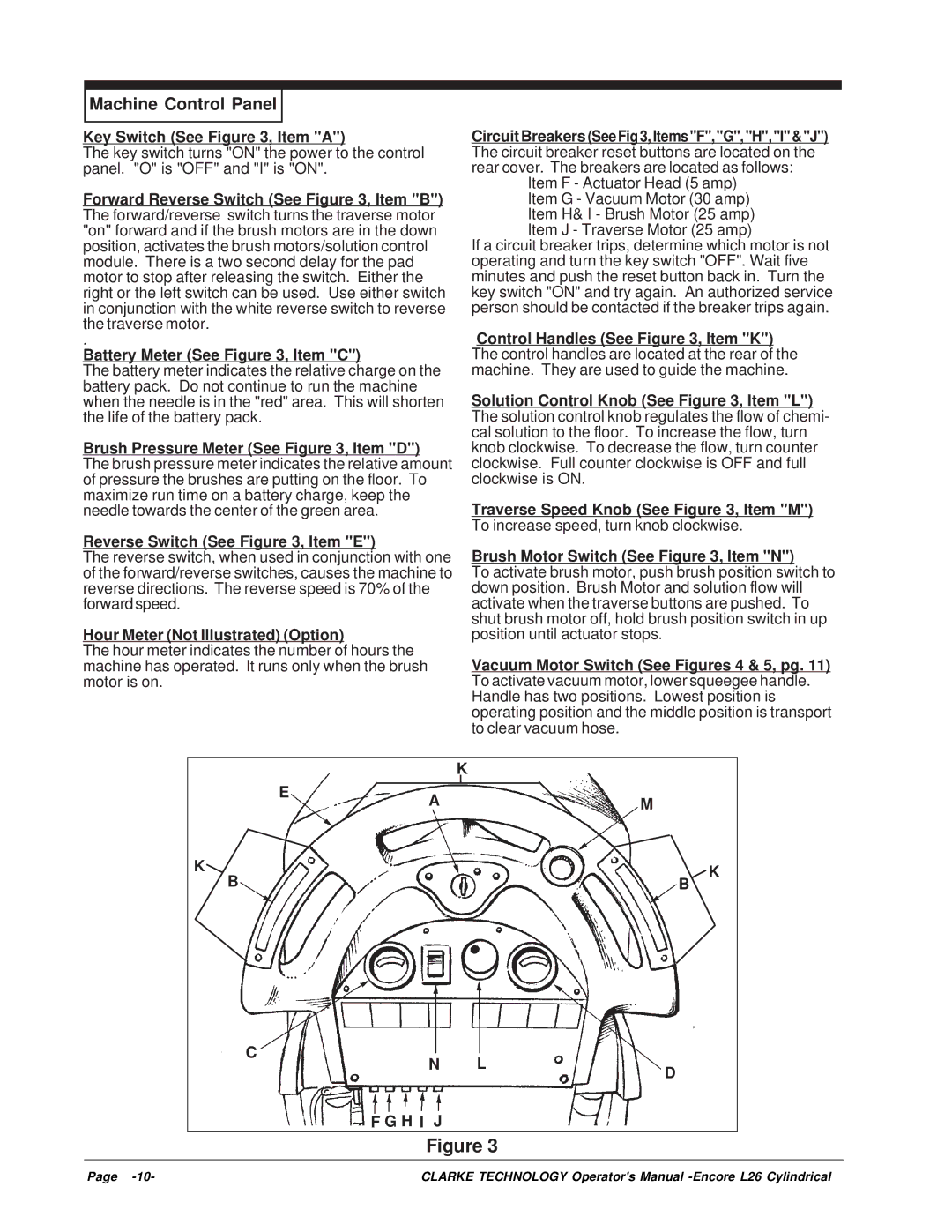L26 specifications
The Clarke L26 stands as a notable entry in the realm of compact excavators, reflecting advanced engineering and user-centric design. This machine is designed for a variety of applications, including landscaping, utility work, and smaller construction projects.One of the main features of the Clarke L26 is its compact size, which allows it to maneuver easily through tight spaces and urban environments. This machine has an overall width of approximately 2.6 meters, making it suitable for projects that require a mini excavator that can fit through narrow gaps and access constrained job sites.
Powered by a robust and efficient diesel engine, the L26 delivers optimal performance without compromising on fuel efficiency. The engine is designed to meet stringent emissions standards while providing ample torque for digging and lifting tasks. The hydraulic system of the L26 is another standout characteristic, featuring sophisticated components that ensure smooth operation and responsiveness during various digging and lifting operations.
The L26 also incorporates advanced technology that enhances operator comfort and productivity. Its spacious cab features ergonomic controls, providing operators with a user-friendly interface. The visibility from the cab is optimized to reduce blind spots, enabling the operator to work safely and efficiently. Additionally, the climate control system in the cab ensures a comfortable working environment, regardless of external weather conditions.
Safety features are paramount in the design of the Clarke L26. It comes equipped with a rollover protective structure (ROPS) and a falling-object protective structure (FOPS), which provide peace of mind to operators working in hazardous conditions. The machine's low center of gravity enhances stability, especially when working on uneven terrain.
In terms of versatility, the Clarke L26 can be outfitted with various attachments such as buckets, augers, and hydraulic breakers, allowing it to tackle a multitude of tasks beyond traditional excavation. The quick coupler system enables easy switching between attachments, significantly reducing downtime during operations.
Overall, the Clarke L26 can be described as a well-rounded mini excavator that combines power, efficiency, and versatility. Its design is aimed at meeting the demands of modern construction and landscaping projects, making it a valuable asset for contractors and operators alike. Whether it's for digging trenches, landscaping gardens, or performing utility work, the L26 proves to be a competent machine that delivers reliable performance.

